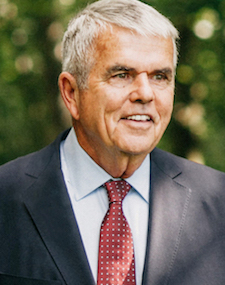By Don Keelan
During a recent phone call with my daughter, who resides in the greater Washington, D.C., area with her family, I was provided with insight as it relates to the present world crisis.
The call was the same day the president declared a national emergency, sporting events were being canceled, travel restrictions implemented, and the stock market was in a steep decline. Elizabeth said that it all reminded her of the day and days after 9/11 –- there was so much uncertainty.
On that fateful day, almost 19 years ago, she was only two months into her position in the Office of the Secretary of Labor. Ordered to evacuate the Labor Department’s building (next to the Capitol), she, along with four of her coworkers, commenced a five-mile run to her apartment in Arlington, Virginia. On their way, they bypassed the devastation that was wrought upon the Pentagon.

Don Keelan
Elizabeth’s choice of the word “uncertainty” seems quite appropriate. She could have just as easily used “vagueness,” “unsafeness,” “unsureness,” or for that matter, “doubt.” They all have relevancy with what was taking place.
During the call, she asked me if I had ever witnessed what the world is going through today and, if so, how I dealt with it. I used 9/11 as an example. There was great fear throughout the country, especially since it was a time that America was attacked and there was the question of whether there would be more direct attacks.
I had mentioned to her that one positive thing to come from 9/11 was how the country came together to address what had taken place on that fateful September morning. Today, we need exactly the same, and it will enable us to pull through the present crisis.
In Arlington, Vermont, we are constantly reminded of when the country was once before engulfed in fear. In many places in town we see prints of Norman Rockwell’s 1944 painting, capturing FDR’s speech, The Four Freedoms, one of which is freedom from fear.
It was in early 1941 that President Franklin D. Roosevelt went before Congress and attempted to calm the fears of Americans. America was fearful that it was not in a position to deal with the military build-up and expansion that Germany, Italy and Japan were undertaking.
Professor David Oshinsky, writing in the March 14, 2020, issue of the Wall Street Journal, points out the many times that the United States had to contend with a pandemic. In all of his examples, social media and instant cable news were non-existent, but the outcome was awful for Americans at the time.
We don’t hear much today about such transmissible diseases as yellow fever, diphtheria, cholera, scarlet fever, smallpox, typhus, tuberculosis, the Spanish Flu, and of course, polio. When the historic pandemics arose, quarantine was implemented, economic hardship was abundant, and fear was everywhere.
Personally, it was the polio epidemic that I can still recall some 70 years later. In June, when school was let out for summer vacation, the panic would begin, naturally with our parents. No gatherings at swimming pools, going to the movies or ball parks to see the New York Giants, Yankees, or Dodgers — “just stay near home” was the order of the day.
Those fears came to an end in 1955 when the scientist Dr. Jonas Salk developed a miracle drug, the Salk vaccine. And it is only a matter of time before the Jonas Salks of 2020 will deliver the vaccine that will stop the spread of COVID-19.
What is needed today is to transform one’s fear into alertness, preparedness and caution.
When FDR assumed office and addressed the nation in March of 1933, he knew all too well how fear arising from the Great Depression had gripped the country. His words, few as they might have been, were right to the point when he stated, “The only thing we have to fear is fear itself.”
Don Keelan writes a bi-weekly column and lives in Arlington, Vermont.


